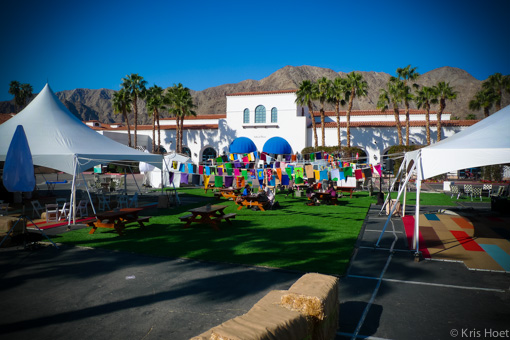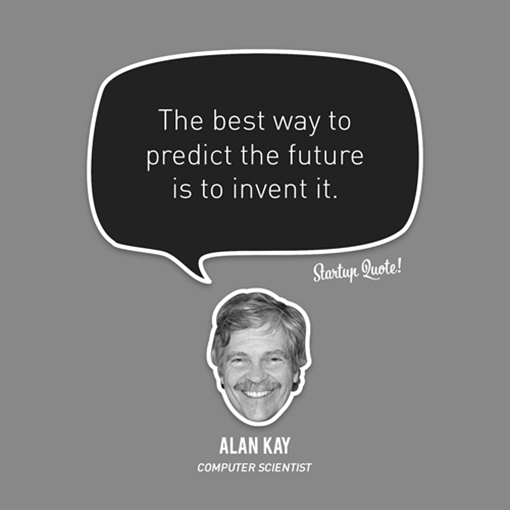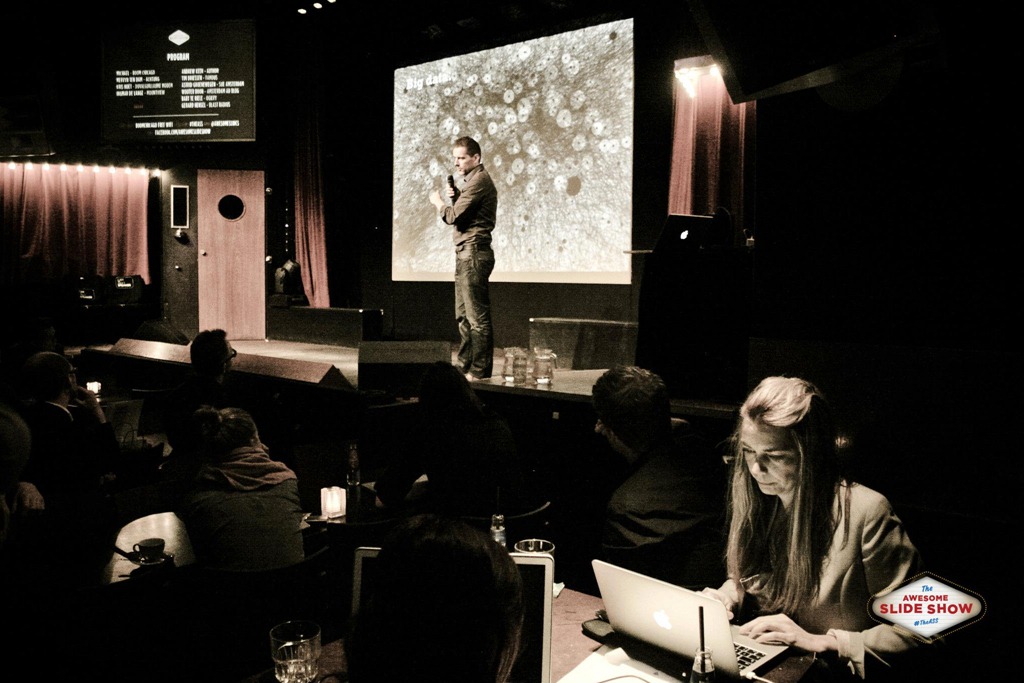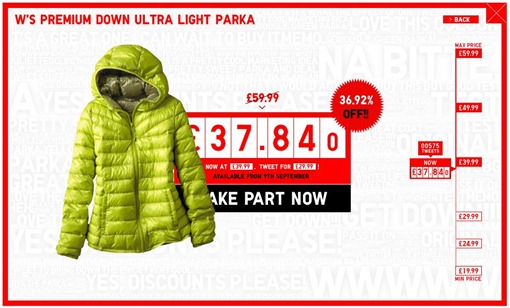Powerpoint, Keynote, … it doesn’t really matter much which piece of software you use to make a presentation. Trust me, there’s only little the software can do for you to make your presentation better, let alone good.
I get my fair share of practice making presentations since I make a few per week, but I also get to see a lot of presentations at events, with clients, suppliers, etc. The list below is an overview of my rules of thumb for creating good presentations.
The audience
First things first. Who are you talking to? It’s probably what bothers me most at conferences, all too often you see a presentation that is not at all tailored for the event. It’s more about what the presenter wants to say versus what the audience came down to hear.
But this doesn’t only count for conferences of course. Also when you’re presenting to your team, your boss or client(s), whatever the situation may be, the audience is key for what and how you will present. What is it that the listener wants to see? What do they expect? What is the context of this presentation? Trying to understand that is like a third of the success of your presentation.
The purpose
What is the reason for the presentation? What’s the goal? What was the briefing or what are you trying to get out of this? New business, an extra headcount, an extra effort from the team, understanding for a difficult decision, buy-in on a company vision, … How many times do you listen to or read a presentation and wonder: what’s the point? The presentation looked nice and all but don’t ask me what it was about.
What’s the point that your are trying to make? I think it’s important that you define the key take-aways well in advance. They don’t have to be crystalized (there’s room for that later in the process) but you need to have a good idea of what it is you want people to remember after the presentation. What it is you want to send them home with.
What is basically the end of the presentation is something you need to define at the start of making it. It’s where you need to build up to and it’s your first check on whether the presentation is in line with purpose you’re making it.
If you want me to do something, you better make that clear so I know what it is that you are looking for.
What do you need to get there?
So you know what your audience came down to see and you defined what it is that you want them to home with. Next step is to think of all the elements you need to have as key ingredients for your presentation.
Think of it as tearing out magazine photo’s before you can start making a collage. You have an idea of the end result and gather photo’s that you think will help you build a story to get there. With presentations it’s the same. Think of all the things that could be helpful to make your point. Quotes, articles, schemes, graphics, ideas, … and lay them all in front of you so you can see which ones you think you could use most.
Turning it into a story
Start with setting the scene. All too often I see a presentation that jumps right into a topic and only by the 3rd slide you figure out what the presenter is actually talking about.
“Bad storytelling is beginning, muddle, end.” (Philip Larkin – poet)
This is probably the most important part of your presentation. You know where you want to land with this, but how do you build up to that point? How do you make it so that within the timeframe that you got, you bring your story/presentation in the most powerful way? Will you start with laying down the problem? Or with the conclusion? There are many ways in building a great story and it’s up to you to figure that one out, but make sure you spend enough time on it. Make sure that you cut out all that is not necessary to make your story come to life.
Using post-it notes to lay out a grid of ideas in front of you and order them is a common trick but a really good one, and one that I also use when building more complex presentations.
Design
I love a nicely designed presentation just as much as everyone else. I don’t think it’s key to a good presentation though, it sort of adds an extra quality to it. Too many people seem to think design is amongst the first things to get right – that’s really not how it’s supposed to be. Some of the best presentations I’ve seen at conferences were of the worst design you can imagine… including Comic Sans.
Make sure the fonts are correct, the typo is the same throughout the presentation, the photo’s are aligned, … these are all easy to do and make the presentation from not looking sloppy. A great design doesn’t make it a better story, so make sure this is not where your main focus is. Or let me say it like this – a presentation full of quotes on a photographic background per slide is not a good presentation, just saying.
Check it
It’s ready so give it a swing. Go over it, maybe with a colleague or someone close to the topic, and see what you (and they) think about it. Did they see the point you were trying to make? Was it clear how you tried to build up to that? Did you feel comfortable with the story? Isn’t there anything missing or isn’t there too much you’re trying to say? The stage is a terrible place to figure out whether you made a good presentation or not, so make sure you got that checked before.
Another check that you need to perform is timing. I hate it when people don’t respect their timing, it’s a simple thing but a form of respect that you don’t abuse the slot that you were given for your presentation. Often people give presentations that aren’t specifically tailored to an audience nor a certain time slot and you can tell from the very first minute that that is the case. Don’t do it. If you want your story to come over right, you need to manage it within the time that you got. It’s different for everyone but I mostly count around 1.5 to 2 minutes per slide, which gives 15 to 20 slides max for a 30 minutes presentation (without title or exit slide)
Bonus check
Sometimes the organizer asks the audience to give feedback on the conference and when they do make sure you get the feedback on your presentation. You might learn something from it. And in case it’s a public event, check out Twitter after your talk as well. And don’t just look for kind words, but for what people tweeted about the presentation, see if are the key elements of the presentation, see if it are those things you wanted people to remember (and share).
Good luck.













